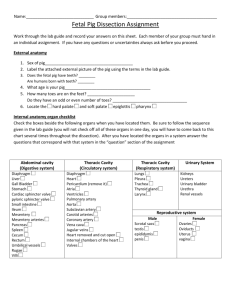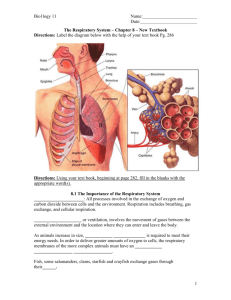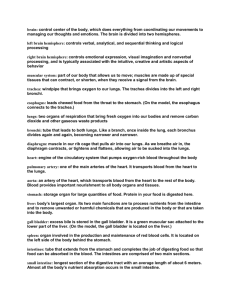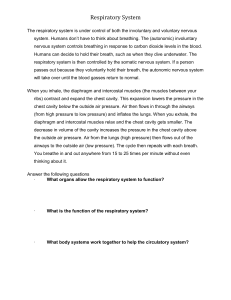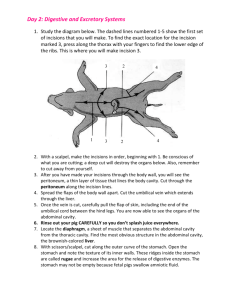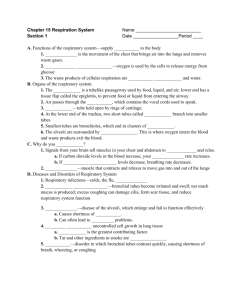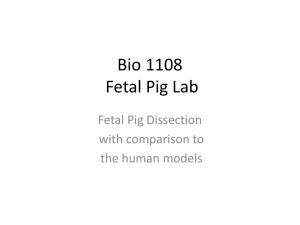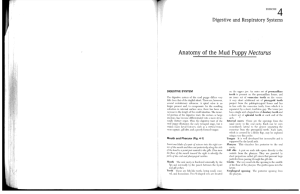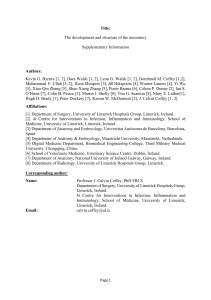CVALab08
advertisement
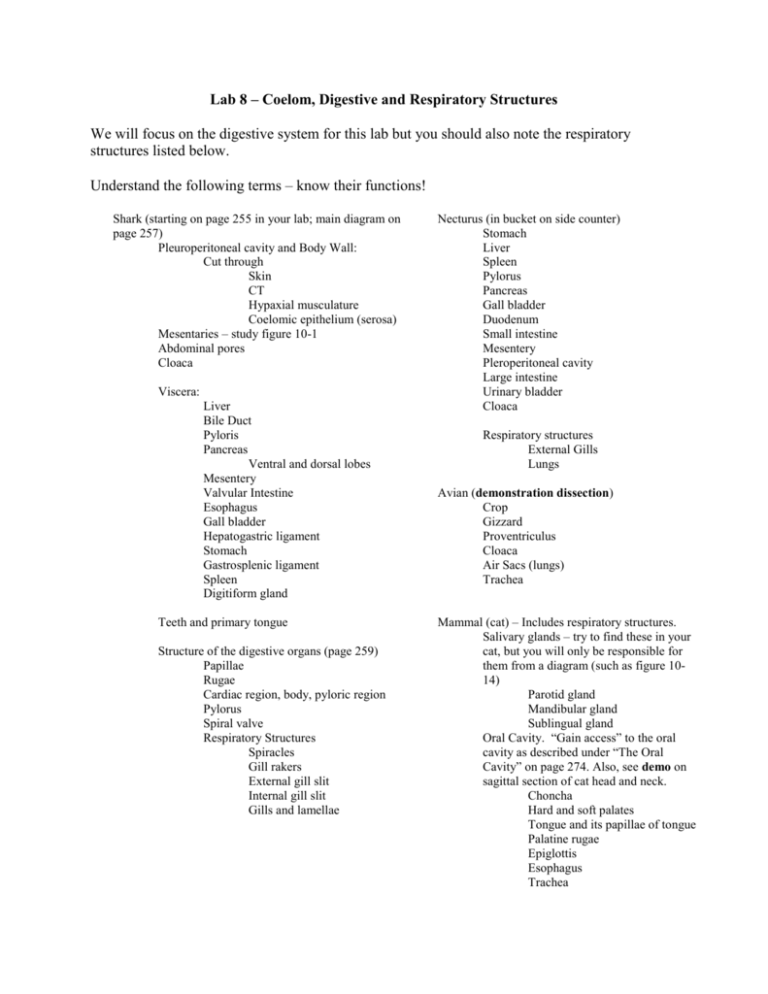
Lab 8 – Coelom, Digestive and Respiratory Structures We will focus on the digestive system for this lab but you should also note the respiratory structures listed below. Understand the following terms – know their functions! Shark (starting on page 255 in your lab; main diagram on page 257) Pleuroperitoneal cavity and Body Wall: Cut through Skin CT Hypaxial musculature Coelomic epithelium (serosa) Mesentaries – study figure 10-1 Abdominal pores Cloaca Viscera: Liver Bile Duct Pyloris Pancreas Ventral and dorsal lobes Mesentery Valvular Intestine Esophagus Gall bladder Hepatogastric ligament Stomach Gastrosplenic ligament Spleen Digitiform gland Teeth and primary tongue Structure of the digestive organs (page 259) Papillae Rugae Cardiac region, body, pyloric region Pylorus Spiral valve Respiratory Structures Spiracles Gill rakers External gill slit Internal gill slit Gills and lamellae Necturus (in bucket on side counter) Stomach Liver Spleen Pylorus Pancreas Gall bladder Duodenum Small intestine Mesentery Pleroperitoneal cavity Large intestine Urinary bladder Cloaca Respiratory structures External Gills Lungs Avian (demonstration dissection) Crop Gizzard Proventriculus Cloaca Air Sacs (lungs) Trachea Mammal (cat) – Includes respiratory structures. Salivary glands – try to find these in your cat, but you will only be responsible for them from a diagram (such as figure 1014) Parotid gland Mandibular gland Sublingual gland Oral Cavity. “Gain access” to the oral cavity as described under “The Oral Cavity” on page 274. Also, see demo on sagittal section of cat head and neck. Choncha Hard and soft palates Tongue and its papillae of tongue Palatine rugae Epiglottis Esophagus Trachea Thoracic Contents (pg 277) Pleural cavities Diaphragm Lungs Trachea Bronchial Tree Heart Liver Gall Bladder Pancreas Mesentery Small intestine Jejunoileum Duodenum Colon Greater Omentum Thymus Spleen Stomach Anus

